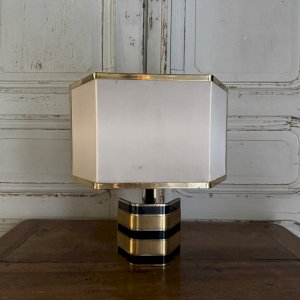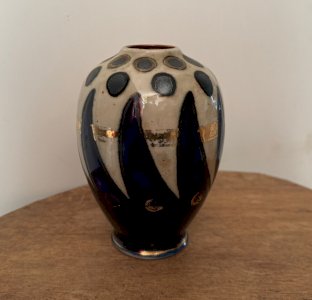- Sell Now
- Home
-
FURNISH
All STORAGE FURNITURE • Wardrobe • Chests of drawers, Chiffonnier • Sideboard • Shelves, Bookshelves • File cabinet • Sewing Furniture • Bar cabinet • TV Stand • Trunk, Chest TABLE & BEDSIDE TABLE • Dinner Table • Coffee table, side table, end table & Bedside • Console, Pedestal table & Selette • Serving Table, Trolley • Card Table • Draper's counter & table SEAT • Sofa • Armchair • Chair • Stool • Bench • Daybed • Beanbag & Footrest • Deckchair & Outdoor DESK, SECRETARY, DRESSING TABLE GARDEN LOUNGE BEDDING • Bed • Bedhead • Cradle, Moses basket CRAFT FURNITURE, WORKSHOP • Workbench • Stool, Ladder, Step • Easel & Trestle SCREEN PIANO
-
DECORATE
All TO PUT • Sculpture, Statuette • Vase & Planter • Dame Jeanne, Bonbonne & Flacon • Bridal globe, Dome • Pin tray, Ashtray • Candlestick & Candle • Photo frame • Stone, Fossil, Mineral • Earth Globe MIRROR WALL DECORATION • Painting • Engraving & Illustration • Poster • Tapestry • Wall Frame • Plate & Sign • Juju Hat & Wall Paniel • Mask • Hunting Trophy • Other object to hang CLOCK, PENDULUM & ALARM CLOCK ARRANGEMENT • Jar, Box & Case • Basket, Wastebasket & Crates • Magazine Rack & Vinyl Holder • Display & Spinner • Coat hook & Coat rack • Furniture Valet & Mannequin • Towel Holder • Suitcase & Travel Bag • Bottle Rack • Umbrella holder BATHROOM OFFICE • Mail holder • Bookends • Sulphide & Paperweight • Stationery FIREPLACE ACCESSORIES HOBBIES • Vintage Sport • Music • Vintage device • Smoking Item • Militaria, Ancient weapon • Miniature Vehicle • Game, Playing Cards • Collection object & Curiosity BIRD CAGE RELIGION, SPIRITUALITY
- TEXTURE
- ILLUMINATE
-
ACCOMODATE
All TABLE & SERVING • Plate • Silverware • Knife Holder • Glass • Bowl, Mug, Cup • Bowl, Ramekin & Cup • Dish, Cup & Salad Bowl • Tray, Basket & Server • Table Mat • Pitcher, Carafe, Bottle, Tea & Coffee Jug • Ice Bucket • Salt & Pepper shakers, Oil & Vinegar shakers • Sugar and jam maker • Gravy boat • Butter dish • Egg cup • Terrine OLD BALANCE CUTTING BOARD GRINDER CASSEROLE, SAUCEPAN & PAN KITCHEN UTENSIL & ACCESSORY
- TINKER
- KIDS
- Jewelry & Accessories
Login
Related Products
Description
LITHOGRAPH BY ABRAHAM GERARDUS BRAM VAN VELDE ABSTRACT COMPOSITION 137 300 H2482 This lithograph was produced by Bram van Velde, it is dedicated in wood pencil with a print marked 137/300. Note traces, stings. The whole remains presentable. Its frame is original, it is in stainless steel, unfortunately the joint does not hold, there is a deformation on the frame. The work remains presentable but it is necessary to accept the defects due to the age Abraham Gerardus van Velde, known as Bram van Velde, born October 19, 1895 in Zoeterwoude, near Leyden, died December 28, 1981 in Grimaud, is a Dutch painter and lithographer. Entered in 1907 as an apprentice in the painting and painting firm interior decoration Schaijk & Kramers, in The Hague, he was encouraged in his art by Eduard H. Kramers and his son Wijnand, collectors and amateurs sensitive to his talent. These will be his patrons regularly until around 1934. Bram is reformed as breadwinner at the start of the First World War. He continued his work as a house painter and decorator, and enrolled at the Mauritshuis in The Hague to copy the old masters. In 1922, Kramers encouraged Van Velde to travel and paid him a small pension. He went to Munich (May), then settled north of Bremen, in Worpswede (June), where since the 1890s there has been a colony of expressionist artists: this short stay of barely more than three months will determine at Van Velde his passage to modernity. However, he left Worpswede fairly quickly to settle in Paris, in the Belleville district. His career took off, and in February 1927 he went to Bremen to exhibit his works. He continued in April by the Jury-Freie Kunstschau in Berlin, and was admitted, along with his brother Geer, to the Salon des Indépendants, in Paris, where they exhibited several times from (1928 to 1932, in 1940 and 1941). He goes to Chartres in the company of Otto Freundlich, and at this time discovers Matisse, probably at Paul Guillaume. An essential meeting for his work, just like, in the years to come, that of Picasso. On October 6, 1928, Van Velde married Lilly (1896-1936), a German painter whom he had probably frequented from Worpswede. After the 1929 crisis, living conditions hardened for the couple, who decided to settle in Spain. In September 1932, they were in Mallorca. The Spanish Civil War broke out in 1936, Lilly died in hospital and Van Velde was repatriated on a warship to Marseille, with a few paintings. He moved to Paris and settled in with Geer, then met Marthe Arnaud, a former Lutheran missionary in the Zambezi, who would become his companion. Through it, he meets Samuel Beckett, who will become his friend. Arrested in 1938 in the street while he was speaking German with Marthe, he was imprisoned for three weeks because his papers were not in order. Van Velde made a few other stays in prison in the years that followed. It was in 1939 that the artist created his own visual language, with the first of three large gouaches that would form the basis of the characteristics of his art. He stopped painting in 1941 (he “no longer had the strength to continue (his) work”, according to what he wrote around 1945 to a Dutch collector), only to resume around the fall of 1945. His first exhibition Personal opens on March 21, 1946 in Paris at the Galerie Mai by Marcel Michaud with twenty-five paintings, almost all of his work. It's a fail. Beckett's first text on Van Velde appears in Christian Zervos' Cahiers d'art. In 1947, he signed a contract with the Galerie Maeght in Paris, and in 1948 exhibited at Kootz in New York - a further commercial failure, despite a good review by Willem de Kooning. After another absence of buyers at Maeght, he stopped painting for a year, then Maeght broke his contract in 1952 after yet another failure, while retaining his stock of works. In 1958, Franz Meyer organized the first museum exhibition of Bram van Velde with his retrospective at the Kunsthalle in Bern. The Bram-Marthe couple left Paris that same year, but Marthe died the following year (August 11), hit by a car while in Paris. Bram got to know Madeleine, in Geneva, at Christmas 1959, who would be his new companion. For the state, please detail the photos. The photos are an integral part of the description Frame dimensions: Height: 66.3 cm Width: 49.7 cm Thickness: 2 cm Litho dimensions: Height: 64 cm Width: 47.7 cm D: 702530 I remain at your disposal for any questions.
Réf :
#16783
Comments
Related Products
Description
LITHOGRAPH BY ABRAHAM GERARDUS BRAM VAN VELDE ABSTRACT COMPOSITION 137 300 H2482 This lithograph was produced by Bram van Velde, it is dedicated in wood pencil with a print marked 137/300. Note traces, stings. The whole remains presentable. Its frame is original, it is in stainless steel, unfortunately the joint does not hold, there is a deformation on the frame. The work remains presentable but it is necessary to accept the defects due to the age Abraham Gerardus van Velde, known as Bram van Velde, born October 19, 1895 in Zoeterwoude, near Leyden, died December 28, 1981 in Grimaud, is a Dutch painter and lithographer. Entered in 1907 as an apprentice in the painting and painting firm interior decoration Schaijk & Kramers, in The Hague, he was encouraged in his art by Eduard H. Kramers and his son Wijnand, collectors and amateurs sensitive to his talent. These will be his patrons regularly until around 1934. Bram is reformed as breadwinner at the start of the First World War. He continued his work as a house painter and decorator, and enrolled at the Mauritshuis in The Hague to copy the old masters. In 1922, Kramers encouraged Van Velde to travel and paid him a small pension. He went to Munich (May), then settled north of Bremen, in Worpswede (June), where since the 1890s there has been a colony of expressionist artists: this short stay of barely more than three months will determine at Van Velde his passage to modernity. However, he left Worpswede fairly quickly to settle in Paris, in the Belleville district. His career took off, and in February 1927 he went to Bremen to exhibit his works. He continued in April by the Jury-Freie Kunstschau in Berlin, and was admitted, along with his brother Geer, to the Salon des Indépendants, in Paris, where they exhibited several times from (1928 to 1932, in 1940 and 1941). He goes to Chartres in the company of Otto Freundlich, and at this time discovers Matisse, probably at Paul Guillaume. An essential meeting for his work, just like, in the years to come, that of Picasso. On October 6, 1928, Van Velde married Lilly (1896-1936), a German painter whom he had probably frequented from Worpswede. After the 1929 crisis, living conditions hardened for the couple, who decided to settle in Spain. In September 1932, they were in Mallorca. The Spanish Civil War broke out in 1936, Lilly died in hospital and Van Velde was repatriated on a warship to Marseille, with a few paintings. He moved to Paris and settled in with Geer, then met Marthe Arnaud, a former Lutheran missionary in the Zambezi, who would become his companion. Through it, he meets Samuel Beckett, who will become his friend. Arrested in 1938 in the street while he was speaking German with Marthe, he was imprisoned for three weeks because his papers were not in order. Van Velde made a few other stays in prison in the years that followed. It was in 1939 that the artist created his own visual language, with the first of three large gouaches that would form the basis of the characteristics of his art. He stopped painting in 1941 (he “no longer had the strength to continue (his) work”, according to what he wrote around 1945 to a Dutch collector), only to resume around the fall of 1945. His first exhibition Personal opens on March 21, 1946 in Paris at the Galerie Mai by Marcel Michaud with twenty-five paintings, almost all of his work. It's a fail. Beckett's first text on Van Velde appears in Christian Zervos' Cahiers d'art. In 1947, he signed a contract with the Galerie Maeght in Paris, and in 1948 exhibited at Kootz in New York - a further commercial failure, despite a good review by Willem de Kooning. After another absence of buyers at Maeght, he stopped painting for a year, then Maeght broke his contract in 1952 after yet another failure, while retaining his stock of works. In 1958, Franz Meyer organized the first museum exhibition of Bram van Velde with his retrospective at the Kunsthalle in Bern. The Bram-Marthe couple left Paris that same year, but Marthe died the following year (August 11), hit by a car while in Paris. Bram got to know Madeleine, in Geneva, at Christmas 1959, who would be his new companion. For the state, please detail the photos. The photos are an integral part of the description Frame dimensions: Height: 66.3 cm Width: 49.7 cm Thickness: 2 cm Litho dimensions: Height: 64 cm Width: 47.7 cm D: 702530 I remain at your disposal for any questions.
Réf :
#16783
 English
English  Français
Français 


























